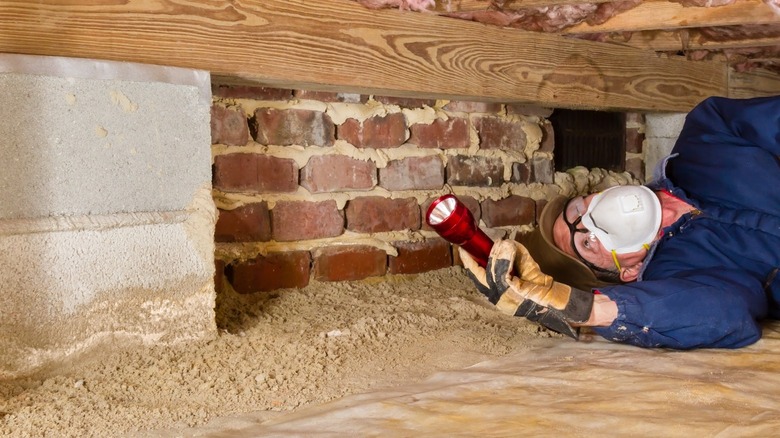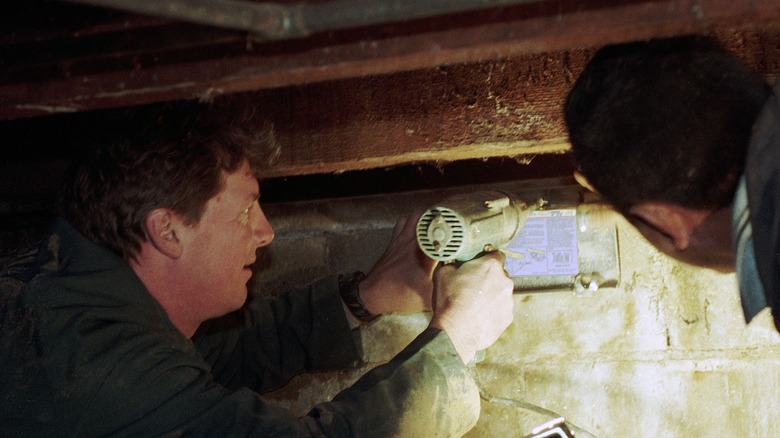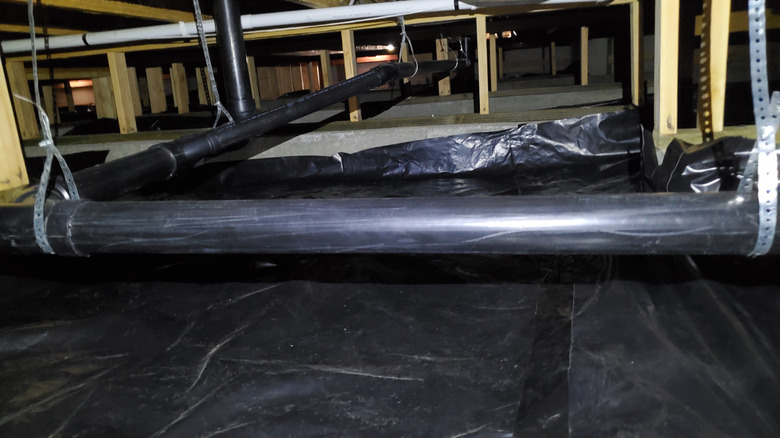How Your Home's Crawl Space Could Be Affecting The Interior's Humidity
If your home has a crawl space beneath it, you need to pay attention to the humidity level there, since it can also affect your home's interior level of humidity. In fact, according to Crawl Space Ninja, 50% of the air in your crawl space seeps into the air inside your home. Therefore, it makes perfect sense that too much humidity in the crawl space will increase the humidity in your home.
The humidity in your crawl space should be between 45% and 55%, otherwise it can be a haven for mold and mildew. The spores can then travel through the duct system and into your house, where you may unknowingly breathe them in. Additionally, that same mold can grow into and destroy the subfloor, and mold remediation is expensive, so you'll want to avoid it at all costs. One way to measure the humidity in your crawl space is by investing in a thermo-hygrometer, simple digital-readout versions of which are available at WalMart for $10.99.
Causes of excessive crawl space humidity
Crawl space humidity can cause all sorts of problems in the home besides increasing indoor humidity. It can also cause floors to sag, insulation to become wet, and pest infestations. Mold and mildew can cause respiratory and other serious health problems. It's important to understand what causes this to happen, of which one of the most common is stagnant water in the crawl space, which can occur in a variety of ways. Excessive rains that may have caused flooding, or gutter downspouts that release next to the house somewhere, are two common examples.
Moisture could also simply be evaporating from the ground below it, which can be easily determined with a thermo-hygrometer. Sometimes, crawl space vents are the culprit, even though they're designed to prevent this problem. If the air outside is damp, however, it can actually increase the humidity within the crawl space further. So you could simply be at a higher risk because of local weather conditions.
What you can do to lower crawl space humidity
One way to start lowering humidity is by air sealing and insulating all crawl space vents, as well as the door, if you have one. Some crawl spaces have a decorative door installed, and while this feature has aesthetic appeal, it actually allows humidity in through the gaps. Instead, it should be an air-sealed and insulated door.
It's likely you have a vapor barrier already laid down, but over time, they can shift and become less effective. Consider having a new vapor barrier installed that covers the ground, walls, and pillars. One that overlaps and seals at the joints will provide a much better vapor barrier. Once all these steps are completed, installing a crawl space dehumidifier is key. This is simply a dehumidifier with a large enough capacity to handle the size of the crawl space you have. It's a bit of an investment, but it will save money on energy costs in the long run, and in the end, your efforts will also be rewarded with a controlled humidity level in your home.


